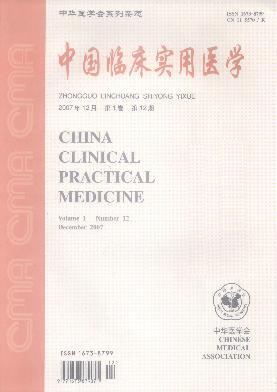Study on the distribution width of red blood cells in patients with chronic heart failure
引用次数: 0
Abstract
Objective Red cell distribution width (RDW) has been shown to be associated with degree of chronic heart failure (CHF). This was a retrospective study that characterized predictive values of baseline RDW to assess severity of CHF, repeated admission. Methods Hematological and biochemical parameters were obtained from 179 patients with New York Heart Association (NYHA) CHF class Ⅰ(n=44), Ⅱ(n=39), Ⅲ (n=41), and Ⅳ(n=55). Receiver operator characteristic (ROC) curves were used for assessing predictive values. Results RDW increased significantly in class Ⅲ and Ⅳcompared with class Ⅰ(14.3±2.3% and 14.3±1.7% vs. 12.9±0.8%, P<0.01). Areas under ROCs (AUCs) of RDW, N-terminal prohormone brain natriuretic peptide (NT-ProBNP) for class IV HF were 0.817 and 0.840. Conclusions RDW increased significantly in classⅢ andⅣpatients. Key words: Red cell distribution width; Chronic heart failure; Predictive value慢性心力衰竭患者红细胞分布宽度的研究
目的研究红细胞分布宽度(RDW)与慢性心力衰竭(CHF)程度的关系。这是一项回顾性研究,以基线RDW的预测价值来评估反复入院的CHF严重程度。方法对179例纽约心脏协会(NYHA) CHF分级Ⅰ(n=44)、Ⅱ(n=39)、Ⅲ(n=41)、Ⅳ(n=55)患者进行血液学和生化指标分析。采用Receiver operator characteristic (ROC)曲线评估预测值。结果Ⅲ和Ⅳ组RDW显著高于Ⅰ组(14.3±2.3%和14.3±1.7%比12.9±0.8%,P<0.01)。IV型HF患者RDW、n端激素原脑利钠肽(NT-ProBNP)的roc下面积(aus)分别为0.817和0.840。结论Ⅲ和Ⅳ级患者RDW明显增高。关键词:红细胞分布宽度;慢性心力衰竭;预测价值
本文章由计算机程序翻译,如有差异,请以英文原文为准。
求助全文
约1分钟内获得全文
求助全文

 求助内容:
求助内容: 应助结果提醒方式:
应助结果提醒方式:


